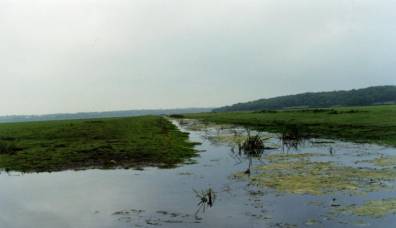
SWALLOW HOLES?
As
the name suggests, a swallow hole is a place where the water is ‘swallowed’
by the ground. An actual hole or
passage may be visible when the turlough is dry but, more usually, all that can
be seen is a hollow with some rocks at the bottom.
Some turloughs have a spring in one place and a swallow hole somewhere
else on the floor, but many turloughs fill and empty through the same hole.
In Rahasane
Rahasane was
once the natural sink of the Dunkellin River, but now an artificial channel or
canal takes some of the water further downstream. This was done in
the 1850’s in an unsuccessful attempt to drain Rahasane. Drainage is the main threat to turloughs and at least one third of
turloughs in Ireland have been drained, and more are being drained each year.
They provide rich grazing for animals in summer partly because of the
rich deposits of lime silt. But
winter flooding can be seen as a waste of a resource and so drainage is often
carried out. However, without the winter flooding, the soil then needs
fertilizer. Grazing is essential to
maintain the characteristic vegetation otherwise scrub and trees would dominate.

Canal dug in 1850’s